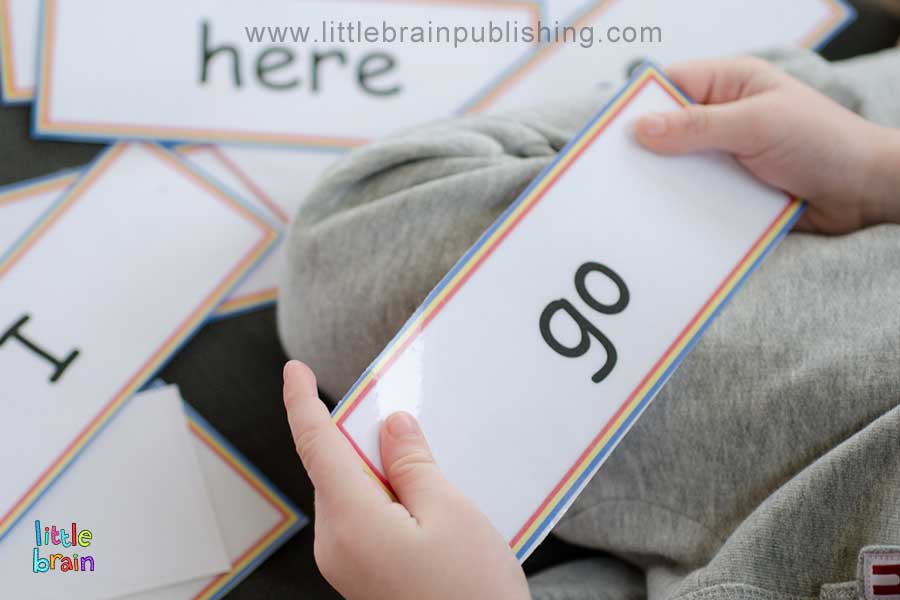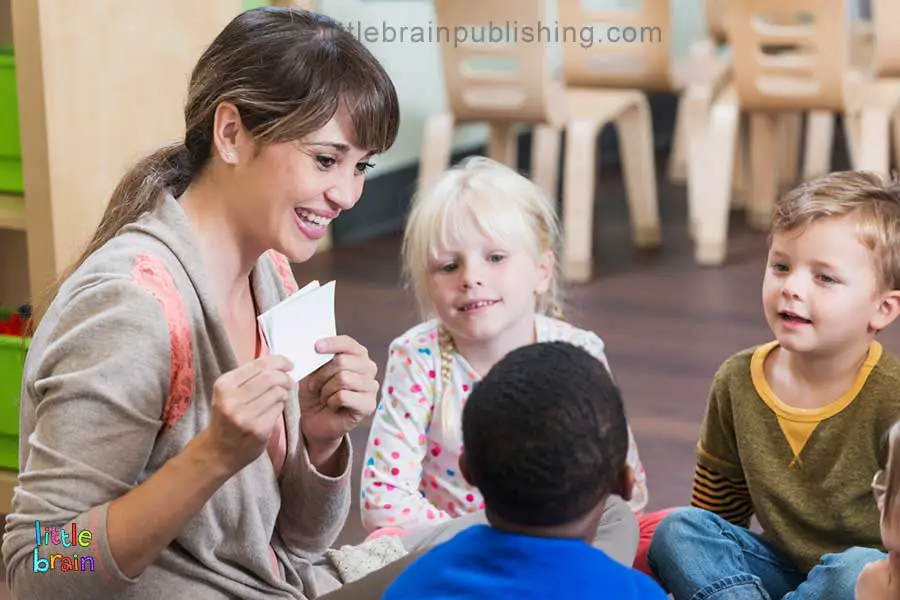Hello! If you say “Hello” and read it instantly, Hello is a sight word for you. Similarly, words that you see and can readjust in a fraction of a second are sight words. And, if you are a fluent reader, chances are you have a bunch/ton of sight words stored in your brain.
You might not even remember how you were able to read words like “and, “be,” etc., in your childhood (during LKG). While lower KG and upper KG kids can read at least 30 to 40 sight words, making their path in school more manageable.

The tricks and effort enforced on the kid can be different as every child is another type of learner. Kids memorize sight words through listening, visual, and writing. Even you have learned those essential sight words subconsciously.
Reading the words doesn’t require conscious effort. Teaching sight words aims to develop automaticity. Automaticity means they don’t need to even think about decoding a word; they should automatically recognize it upon seeing it. Reading is a skill that can be effortless and unconscious, like breathing.
I hope you just understood the importance of learning sight words. But, how do you teach kids these words? Well, here are few fun ways to teach your kid sight word with minimum effort.
- List It & Go Slow
This method is the most basic yet effective method. For a UKG student, 20 sight words are a must. Divide those 20 words into a group of 5. Teach four words per week, making it a task of 5 weeks for 20 words. No need to hurry up, but if your child is grasping at a better speed, you can gradually increase words per week. Secondly, use the word in sentences.
Example:
List 1: And, At, Are, The, But
List 2: There, Can, Do, Go, How
We can use words in sentences like:
The Dog and Cat are animal
Look at him
Michelle likes Chocolates but not Cookies.
Use more and more sentences; this has two advantages. One, he memorizes words, and second, gradually, he understands the meaning and use of those words. Once he can recognize list 1, go for list 2. Now in List 2, use the words of list 1. Try to analyze if the kid is facing any problem recognizing words of list 1 or not. IF yes, no issues; if no, teach those words again.
List 2:
A dog can beat a cat
How can it be possible?
The car stopped at the right time
Do not go there
The turtle walked slowly but won the race.
The rabbit was faster but lost the race.
- Flashcards:
You can make plenty of flashcards and games at home. One of the games is “Flash Bingo.” Make a table with sight words in it. Give your child flashcards of the exact words.
Now, read any word loudly.

The child here needs to select the correct flashcard and place it over the table. To make it easier for a newbie, remove flashcards and say a word; let your child put his hand on the word. If the child does the job correctly, reward him. If he fails, teach him again.
- Look – Cover – Write – Check:
This method is simple and used to memorize spelling. The steps are as follows:
- Look at the word
- Cover it with a paper and write the spelling in the second block
- Uncover and check the spelling
- For sight words, you can add one more step. Pronounce it and write it again.
- Listen and Color the Word:
Take an A4 size sheet of paper, draw circles and write words in it. Read the word and tell your child to color the word he listens.
- Dice Flashcards:
You and your child can play this competitive game. Take two A4 size papers and draw a table of “6×6”.
Now, assign a word for each side of the dice. Suppose “and” for 1, “the” for 2, and so on. Now, your child rolls the dice and gets Number 2; he will write “the” in box 2 of the table.
You write a word six times (as it’s a 6×6 table, six words, six places for each). Your turn comes, and you get Number 5. You will write the word assigned to the number 5.
The game goes, and if a word’s places are filled, the chance gets wasted. The one who completes the table first wins. Here, he writes each word 5-6 times for a win and eventually memorizes it in a fun way.
What Are The Basic Sight Words?
Sight Words are commonly used words kids should recognize instantly without any need to decode them or sound them. Words like “the, once, it” appears often that readers can recognize without even thinking about it.
You can recognize sight words instantly through visual/viewing/seeing. A firm grip on sight words can make your child a fluent and confident reader.
We often use sight words, and they are also known as “High-Frequency Words.” Usually, kids find it easier while the initial stages or words follow phonics rules. However, some words don’t follow phonics rules termed non-phonetic words (sometimes trick words).
When it comes to basic sight words, every school sets its standards and technique. And, kids recognize more and more words (as much as possible or they can). Here’s a rough assumption of basic sight words for kindergarteners as follows:
| Kindergarten Sight Words | ||||||
| A | Do | Has | I | Me | So | To |
| An | Go | Have | In | My | See | Up |
| Am | Can | He | Is | No | She | Down |
| And | For | Here | It | Like | Said | To |
| Are | Be | They | With | Look | Once | We |
| At | But | Was | Upon | Play | For | What |
| Non-Phonetic Words | ||||||
| Was | Been | Behind | Bought | Bear | Above | Country |
Research-Based Strategies For Teaching Sight Words:
You can adopt many ways to teach sight words, but none of those are proven. However, these methods don’t need any research because kids have been learning through these strategies for a long time. And, the only thing which has some research is “visual and verbal learning.”
Visual learning has been proven more effective than verbal ones. Kids tend to forget things they have spoken about. But, they don’t forget things they have seen and understood.
Nevertheless/Nonetheless, kids learn through repetition and practice. Every kid is a different learner. A kid who knows better through visuals should be taught through visuals. Similar for verbal learners too.
Following are the best strategies:
- Read an Interactive Story Book
- Word Walk
- Listwise teaching approach
- Spot the Word
- Dice Flashcards
- Repetition and Practice
- Rainbow Colors: Writing a word using all rainbow colors can increase efficiency in learning. According to the Stroop effect, our brain recognizes words faster than color. Colors affect learners’ attention levels on certain things. It also helps their brain to transfer information to short and long-term memory.
What Is The Fastest Way To Teach Sight Words?
The fastest way to teach sight words is “introduce, review, revise, and correction.” Introduce new words, practice them, review them after a day or two. Revise words if your child faces a problem, and correct those concepts. Here are few strategies associated with the above context.
- See & Say: The child sees the words and pronounces them.
- Sand Writing: The child sees the word and writes it on a sandboard
- Look, Cover and Write: Discussed previously.
- Treasure Hunt: Make a table as follows and hide text cutouts in your home. Hide cutouts in a way that the child can find them with minimal effort. And the number of cutouts is equal to the number of rewards. It makes learning fun and rewarding for them.
- Dice and Flashcards: Discussed previously.
- Guess-Who Game: For this game, make flashcards of 20 sight words. And, create direction pages like “Which all words have letter “E” in it?”. Or something like, “Which letters have at least two vowels (a,e, i,o,u)?”. Make 5-6 direction cards and give your child to solve them. This game develops deduction skills and makes sight words familiar to your child.
